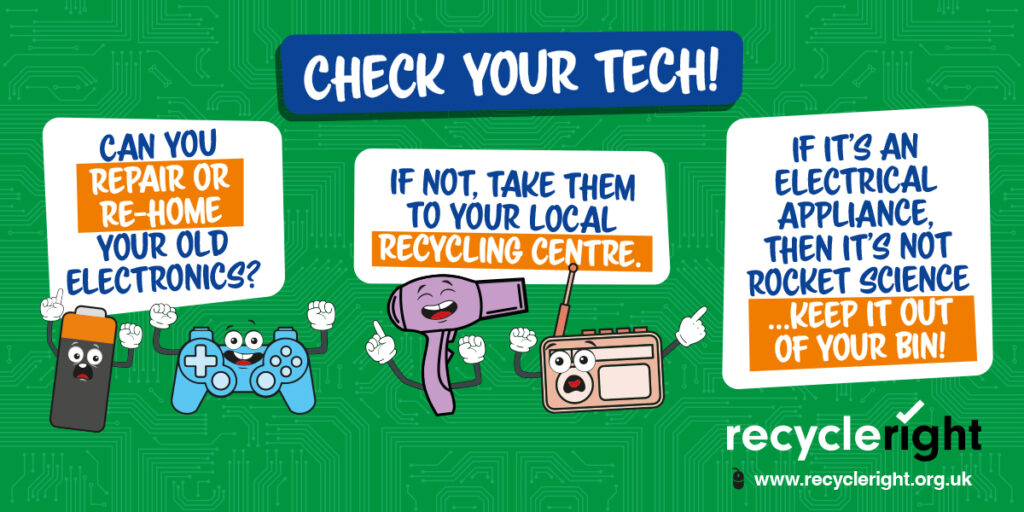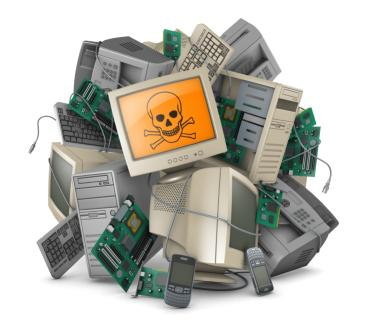Unknown Facts About Recycling Lives Services
Table of ContentsSome Known Incorrect Statements About Recycling Lives Services The Greatest Guide To Recycling Lives ServicesRecycling Lives Services - TruthsNot known Facts About Recycling Lives ServicesThe Definitive Guide to Recycling Lives Services

You can take all home electric products to Oxfordshire's waste recycling centres for recycling. If your thing remains in functioning problem, consider contributing it. If your electric product is broken, you might try to find a regional repair caf where volunteers can repair it. You can also take into consideration obtaining electrical products that you do not make use of often. Additionally, all Oxfordshire regional authorities approve vapes and e-cigarettes as a separate kerbside collection. Just how they are accumulated in each location differs slightly; inspect you have the proper details for your location.
Portable batteries the kind you find in little portable gadgets can additionally be recycled at the kerbside however not inside any one of your containers. Inspect the Waste Wizard for just how to do this in your location. Larger shops that market batteries likewise have collection factors for recycling old batteries. Batteries ought to always be gotten rid of from electric items where they are developed to do so and reuse individually, Energy-saving, LED and portable fluorescent light bulbs and tubes can be recycled at our recycling centres.
A Biased View of Recycling Lives Services
Older-style filament or halogen light bulbs can be disposed of in your basic rubbish container at home. Some DIY stores likewise have collection factors for light bulbs.

Some Known Incorrect Statements About Recycling Lives Services
Electrical things are damaged down right into different pasts to ensure that the various products they are composed of can be gotten rid of and reused. Waste recycling centres are for use by householders only and can not accept waste from commercial sources. Nonetheless, small companies and traders have a task of care under this scheme, which means they also need to follow the WEEE laws.
E-waste, digital waste, e-scrap and end-of-life electronic devices are terms often used to describe utilized electronics that are nearing the end of their valuable life, and are thrown out, contributed or offered to a recycler. The UN specifies e-waste as any discarded items with a battery or plug, and features toxic and unsafe materials why not try here such as mercury, that can position severe danger to human and ecological wellness.
The Single Strategy To Use For Recycling Lives Services
Only 17.4% of this electronic waste, including a mix of unsafe compounds and precious products, will be taped as being properly gathered, dealt with and recycled - https://www.gaiaonline.com/profiles/rcyclng1vssvc/46850349/. Numerous campaigns are embarked on to tackle this growing problem, yet none can be fully reliable without the energetic role and right education and learning of customers

Mining discarded electronics produces 80% less discharges of carbon dioxide per system of gold compared with mining it from the ground. In 2015, the removal of resources accounted for 7% of the world's energy intake. This suggests that relocating in the direction of making use of even more secondary raw materials in electronic goods could help significantly within the targets laid out in the Paris Agreement on climate adjustment.
Recycling Lives Services for Beginners
Every tool ever before created has a carbon footprint and is adding to human-made worldwide warming. Manufacture a tonne of laptop computers and potentially 10 tonnes of CO2 are released. When the carbon dioxide launched over a gadget's life time is taken into consideration, it primarily occurs throughout production, prior to consumers acquire a product. This makes reduced carbon processes and inputs at the production stage (such as usage recycled raw products) and product life time essential components of general ecological impact.
Even in the EU, which leads the world in e-waste recycling, simply 35% of e-waste is officially reported as appropriately collected and recycled. Globally, the average is 20%; the continuing to be 80% is undocumented, with much winding up buried under the ground for centuries as landfill. E-waste is not naturally degradable. The lack of recycling evaluates heavily on the international digital industry and as gadgets come to be more various, smaller and much more intricate, the concern escalates.
The remaining mass of e-waste primarily plastics laced with metals and chemicals presents a much more unbending issue. A brand-new vision for the manufacturing and usage of electronic and electric products is needed. It is simple for e-waste to be framed as a post-consumer issue, however the problem includes the lifecycle of the devices everybody makes use of.